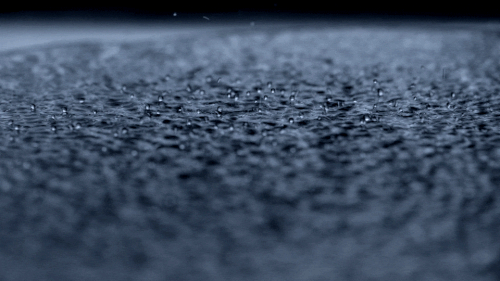In the ever-evolving landscape of dental care, maintaining the hygiene of dental appliances is of paramount importance. As technology continues to advance, traditional cleaning methods are giving way to more efficient and effective alternatives. One such revolutionary method is ultrasonic cleaning, a process that utilizes sound waves to clean dental appliances with unparalleled precision. In this article, we will delve into the intricate workings of ultrasonic cleaning and its applications in the field of dentistry.
Understanding Ultrasonic Cleaning
Ultrasonic cleaning is a non-invasive and highly efficient method of cleaning dental appliances, such as dentures, retainers, and orthodontic devices. Unlike traditional cleaning methods, which often involve manual scrubbing or soaking in chemical solutions, ultrasonic cleaning harnesses the power of sound waves to remove contaminants and debris from the surfaces of dental appliances.
The process begins with a specialized ultrasonic cleaner, which consists of a stainless steel tank filled with a cleaning solution. The cleaning solution is a key component of the process, as it facilitates the transmission of ultrasonic waves and aids in the removal of contaminants. Typically, a water-based solution or a mild detergent is used to ensure the safety of the dental appliances.
How Ultrasonic Cleaning Works
-
Generation of Ultrasonic Waves: Ultrasonic cleaners generate high-frequency sound waves, usually in the range of 20 to 40 kHz. These waves are beyond the audible range for humans, making them imperceptible to the human ear. The transducer, a crucial component of the ultrasonic cleaner, converts electrical energy into mechanical vibrations, producing these ultrasonic waves.
-
Cavitation Effect: The magic of ultrasonic cleaning lies in the phenomenon known as cavitation. As the ultrasonic waves travel through the cleaning solution, they create alternating high and low-pressure cycles. During the low-pressure cycle, tiny bubbles or cavities form in the cleaning solution. These bubbles grow in size during the low-pressure phase and implode violently during the high-pressure phase.
-
Microscopic Scrubbing Action: The implosion of these microscopic bubbles generates intense shock waves and high-velocity microjets in the cleaning solution. This process, known as cavitation, produces a scrubbing action on the surfaces of dental appliances immersed in the cleaning solution. The high-speed microjets effectively dislodge and remove contaminants, including bacteria, plaque, and other debris, from the intricate surfaces of dental appliances.
Benefits of Ultrasonic Cleaning for Dental Appliances
-
Thorough Cleaning: Ultrasonic cleaning reaches areas that are difficult to access through manual cleaning methods. The microscopic scrubbing action ensures that even the tiniest crevices and irregularities on the surfaces of dental appliances are thoroughly cleaned.
-
Gentle on Materials: Unlike abrasive cleaning methods that may damage the surface of dental appliances over time, ultrasonic cleaning is gentle. It effectively removes contaminants without causing any harm to the material integrity of the appliances.
-
Time-Efficient: Ultrasonic cleaning is a rapid process that significantly reduces cleaning time compared to traditional methods. This efficiency is particularly beneficial in busy dental practices where time is of the essence.
-
Reduced Dependency on Chemicals: While a mild cleaning solution is used in the ultrasonic cleaning process, the reliance on harsh chemicals is significantly reduced. This is particularly advantageous for individuals who may be sensitive to certain chemical agents used in traditional cleaning methods.
-
Enhanced Disinfection: The cavitation effect not only removes visible debris but also contributes to the disinfection of dental appliances. The intense shock waves produced during cavitation have a sanitizing effect, helping to eliminate bacteria and other microorganisms present on the surfaces of dental appliances.
Applications in Dentistry
-
Dentures: Ultrasonic cleaning is widely used for cleaning dentures, eliminating the need for manual scrubbing or soaking in chemical solutions. The thorough cleaning provided by ultrasonic technology is crucial for maintaining the hygiene of dentures, preventing oral health issues.
-
Orthodontic Devices: Orthodontic devices, such as braces and retainers, often have intricate designs that can be challenging to clean effectively. Ultrasonic cleaning ensures that these devices are free from plaque and bacteria, promoting better oral health for patients undergoing orthodontic treatment.
-
Implant Prosthetics: Dental implant prosthetics require meticulous cleaning to prevent complications. Ultrasonic cleaning is employed to remove contaminants from the surface of implant-supported restorations, ensuring the longevity and success of the implant.
-
Endodontic Instruments: Endodontic instruments used in root canal procedures can be complex and difficult to clean thoroughly. Ultrasonic cleaning aids in the removal of debris from these instruments, contributing to the overall success of endodontic treatments.
Ultrasonic cleaning has emerged as a game-changer in the realm of dental care, offering a highly efficient and precise method for cleaning dental appliances. The utilization of ultrasonic waves and the cavitation effect provide a thorough and gentle cleaning process that addresses the challenges posed by traditional cleaning methods. As the dental industry continues to embrace technological advancements, ultrasonic cleaning stands out as a cornerstone in the quest for improved oral hygiene and patient care. Its applications in cleaning dentures, orthodontic devices, implant prosthetics, and endodontic instruments underscore its versatility and effectiveness in various aspects of modern dentistry. As we look to the future, it is likely that ultrasonic cleaning will continue to play a pivotal role in shaping the landscape of dental hygiene practices.

